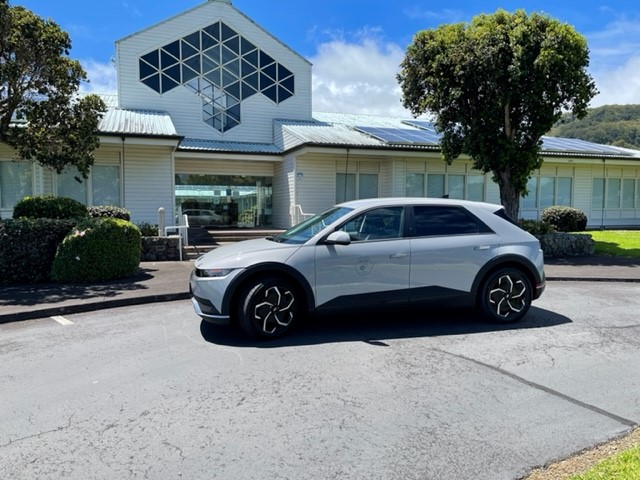Kamuela/Maunakea, Hawaiʻi – Compelled by the urgent need to take critical action on the global climate crisis, W. M. Keck Observatory has set a goal of net-zero carbon emissions by 2035, as outlined in a recent report published in the journal Nature Astronomy.
“We are serious about being good stewards of our precious environment,” said Director Hilton Lewis of Keck Observatory. “We have formulated a strategy towards achieving net-zero emissions by 2035, but our aspiration is to get there by 2030, driven by our passionate staff.”
“I am excited to be planning this initiative,” said Keck Observatory Sustainability Advisor Kevin McCann and lead author of the report. “While achieving net-zero at Keck will be awesome, it is only a drop in an ocean of need. The real opportunity is to build momentum in our state and in the astronomy profession. By sharing our emission reduction strategy and applying what we learn from the efforts of other Maunakea Observatories and other organizations, we will help accelerate Hawaiʻi’s transition to a greener economy and more sustainable future.”
Keck Observatory’s climate action goal addresses the two emission scopes for which we have completed a full greenhouse gas inventory:
- Scope 1: Direct emissions at the Observatory’s facilities
- Scope 2: Indirect emissions from purchased power
The goal is to achieve net-zero Scope 1 and Scope 2 carbon emissions by 2035 by:
- Decarbonizing the Observatory’s vehicle fleet. Replacing our current fleet with electric vehicles (EV) eliminates over 99% of Scope 1 emissions. This project is already in motion with the Observatory’s installation of its first EV charging station and purchase of its first electric car this past summer; more is planned for 2023.
- Improving energy efficiency. We plan to continue enhancing the energy efficiency of the Observatory’s facilities, an effort jumpstarted in 2013 with the installation of a solar photovoltaic (PV) system at our headquarters and at our telescope building on Maunakea in 2020, and now on to energy reduction plans for the dome exhaust fans and telescope hydrostatic bearing systems. Other measures will also be taken into account, including the benefits from the progress Hawaiian Electric is making on its renewable energy goals for Hawaiʻi Island’s electricity grid.

In addition to its net-zero goal for Scope 1 and 2, Keck Observatory will also research ways to minimize Scope 3 emissions, which involve other indirect emissions from sources not owned or controlled by the Observatory but occur as a consequence of observatory activities. For example, we will look for ways to decrease our business air travel footprint by increasing awareness of the environmental impacts of traveling, and exploring current and emerging remote interaction technologies.
Per our 2019 data, the majority of Keck Observatory’s estimated carbon footprint came from emissions involved in the generation of electricity – about 80 percent.
“Fortunately, we are blessed to be located on Hawaiʻi Island where Hawaiian Electric data in 2021 shows 60 percent renewable energy, making it the greenest grid of the island chain on its path to net-zero by 2045,” said Craig Nance, operations engineering manager at Keck Observatory and co-author of the report. “Keck can help by continuing our decade-plus history of energy efficiency improvements.”
“Astronomy teaches us that planets like Earth are likely rare, conceivably even unique, and must not be taken for granted,” said Lewis. “Our climate action goals are ambitious, but doable. I strongly believe it is imperative the Keck Observatory take bold steps to do our part in ensuring our planet is a safe and healthy place for ourselves and future generations.”
ABOUT W. M. KECK OBSERVATORY
The W. M. Keck Observatory telescopes are among the most scientifically productive on Earth. The two 10-meter optical/infrared telescopes atop Maunakea on the Island of Hawaii feature a suite of advanced instruments including imagers, multi-object spectrographs, high-resolution spectrographs, integral-field spectrometers, and world-leading laser guide star adaptive optics systems. Keck Observatory is a private 501(c) 3 non-profit organization operated as a scientific partnership among the California Institute of Technology, the University of California, and the National Aeronautics and Space Administration. The Observatory was made possible by the generous financial support of the W. M. Keck Foundation. The authors wish to recognize and acknowledge the very significant cultural role and reverence that the summit of Maunakea has always had within the Native Hawaiian community. We are most fortunate to have the opportunity to conduct observations from this mountain.


